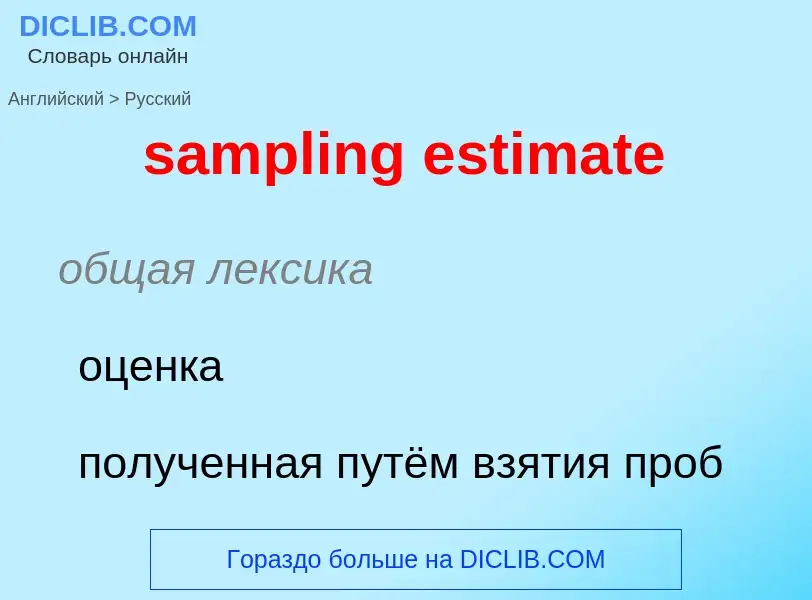Перевод и анализ слов искусственным интеллектом ChatGPT
На этой странице Вы можете получить подробный анализ слова или словосочетания, произведенный с помощью лучшей на сегодняшний день технологии искусственного интеллекта:
- как употребляется слово
- частота употребления
- используется оно чаще в устной или письменной речи
- варианты перевода слова
- примеры употребления (несколько фраз с переводом)
- этимология
sampling estimate - перевод на русский
общая лексика
оценка
полученная путём взятия проб
общая лексика
теорема отсчетов
математика
доля выборки в генеральной совокупности
общая лексика
частота дискретизации, частота выборки
интервал (шаг) сетки выборки, используемый при дискретизации аналогового сигнала, другими словами, сколько раз за единицу времени измеряется аналоговый сигнал для его преобразования в цифровую форму, кодирования или модуляции. Стандарт MPC требует, чтобы звуковые платы записывали звук с частотой выборки не ниже 11 кГц
частота выборки
сейсмология
частота квантования
интервал квантования
скорость дискретизации
синоним
Определение
Википедия

The Raygor estimate graph is a readability metric for English text. It was developed by Alton L. Raygor, who published it in 1977.
The US grade level is calculated by the average number of sentences and letters per hundred words. These averages are plotted onto a specific graph where the intersection of the average number of sentences and the average number of letters/word determines the reading level of the content. Note that this graph is very similar to the Fry readability formula's graph.
This graph is primarily used in secondary education to help classify teaching materials and books into their appropriate reading groups.




![Subsampled image showing a [[Moiré pattern]] Subsampled image showing a [[Moiré pattern]]](https://commons.wikimedia.org/wiki/Special:FilePath/Moire pattern of bricks small.jpg?width=200)


